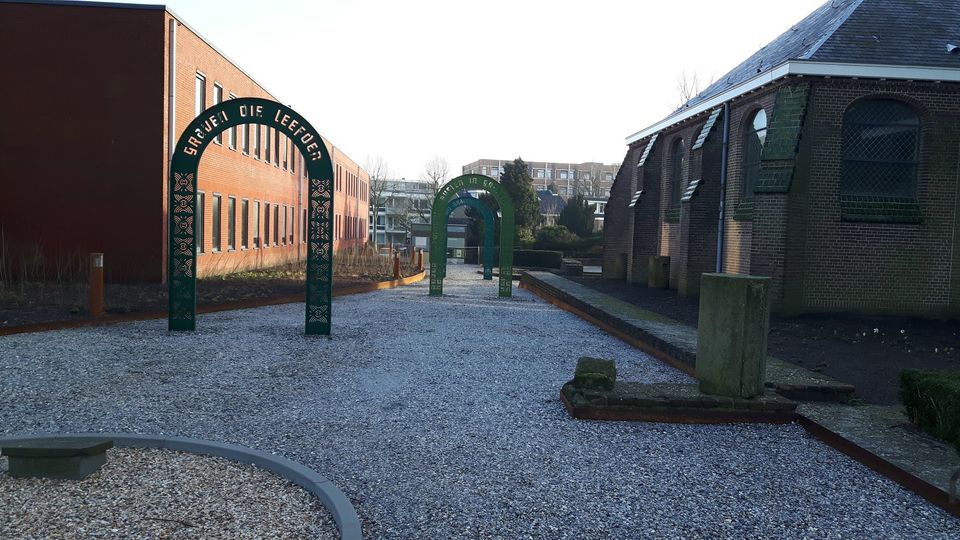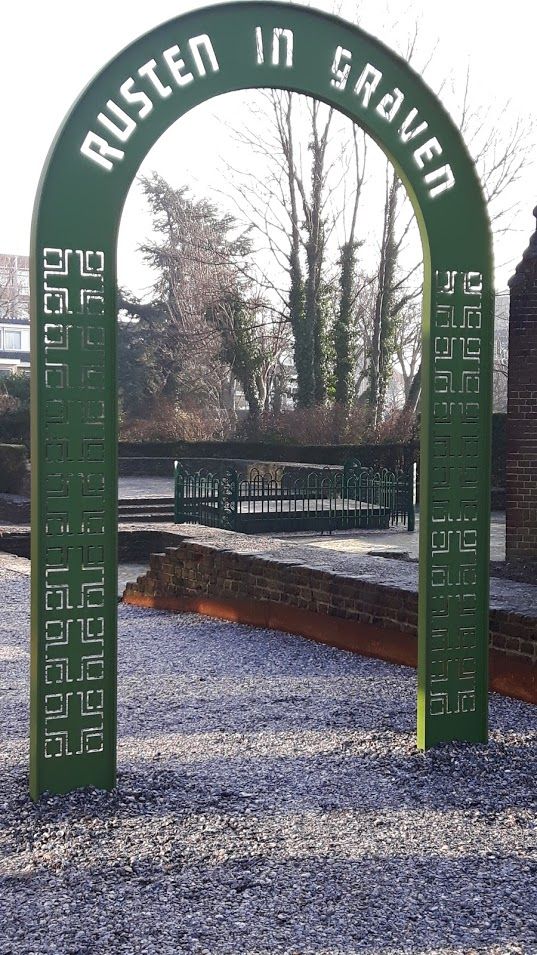Mausoleum Rijnsburg
Contact

The mausoleum is historically an important site in Rijnsburg. For a long time its history was hidden, but now the site has been set up as a place of remembrance.
The history of Rijnsburg goes back far before our era - at that time the area was already inhabited. Only a few centuries later the then current name "Rhudolfsheim" appears officially in writings. Rijnsburg becomes truly famous only later. By then, the counts of Holland have had a connection with our area for many years.
The foundation of a Benedictine monastery in 1.133 A.D. by Petronella of Saxony, wife of Floris II, means an enormous boost for Rijnsburg. The monastery had a lot of political and economic influence at the time.
Moreover, the women's abbey was known as a safe haven, where everyone - regardless of persuasion - was received hospitably. It is not for nothing that Spinoza and the Collegiants would later also settle in Rijnsburg!
Design mausoleum
Four arches w…
The history of Rijnsburg goes back far before our era - at that time the area was already inhabited. Only a few centuries later the then current name "Rhudolfsheim" appears officially in writings. Rijnsburg becomes truly famous only later. By then, the counts of Holland have had a connection with our area for many years.
The foundation of a Benedictine monastery in 1.133 A.D. by Petronella of Saxony, wife of Floris II, means an enormous boost for Rijnsburg. The monastery had a lot of political and economic influence at the time.
Moreover, the women's abbey was known as a safe haven, where everyone - regardless of persuasion - was received hospitably. It is not for nothing that Spinoza and the Collegiants would later also settle in Rijnsburg!
Design mausoleum
Four arches were used in the design. The arches are positioned on the shell path and lead the visitor, as it were, through the area. The arches are reminiscent of rose arches that were part of the monastery gardens present at the time. On each arch is a short sentence. Together, the sentences connect the past with the present.
On the information panels present, the history of this part of Rijnsburg is told in an attractive manner, for example using archive documents and discoveries made during excavations in the area. Centrally located in the area is the grave, which of course can also be visited.
Would you like to know more about the history of Rijnsburg? Then visit the nearby museum


